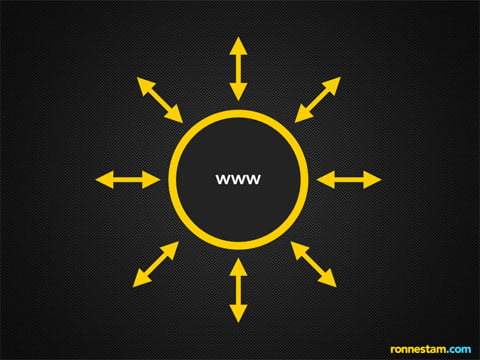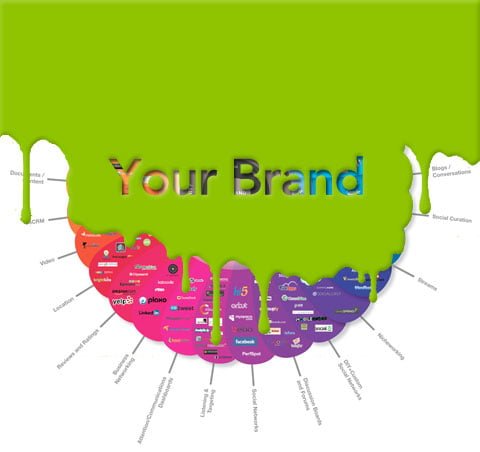We’ve all heard it before. A brand is not a logo, nor is it your products or services. Your brand is the sum of peoples feelings when they think about your brand. Or said in a more ‘techy’ way – An emotional translation of what first comes to mind when neurons fire in the brains around the world when your brand, products or services is mentioned.
As people spend more and more of their life socializing online and searching for products and services your brand is naked, exposed and on it’s own. There are no sales people telling people about your product anymore, you’re left with seconds to raise interest before people leave you and most important – your brand no longer belongs to you, it belongs to all those people online who either say good things about you or worse, tell people that your brand suck!
Here are 5 things to think about when keeping your brand together in the future social world.
1. Brand presence not brand site

I’ve written about this and that before. But it’s something worth repeating. You should not – I repeat – you should not focus on driving traffic to your website. Instead, focus on spreading your brand over as many social networks and websites as possible. If you do and do it good, people will end up finding you anyway. Funny, by not focusing on driving traffic you’ll end up driving traffic 😉
2. Paint it all in green (or whatever you need to paint it in in order to create brand recognition)
 Cover the social web as best described by Brian Solis and Jess3 with your brand colors
Cover the social web as best described by Brian Solis and Jess3 with your brand colors
Socially spread content must always do good. This means you should create 2 second intros for all your videos, take the time to ad the right metadata to social sites like YouTube, Flickr, Slideshare, Vimeo, Viddler and more. If we like what we see, read, listen to and experience your content will enforce your brand in a positive way. Don’t overestimate that people will search for your brand. The attention span today is more or less null. So brand recognition is a must.
3. Share value not tag lines
Don’t think social communication is about advertising inside social networks. Focus on value creation. Once you start focusing on value your getting back into the digital value chain that now is being hijacked by your customers and other people.
For example, If your into consulting your best chance of getting new customers is actually to blog and share content on how people could do without you. That’s content the people will link to, share and promote. That way you’ll end up in top positions in Google, you’ll be shared on Facebook, Twitter and other networks. In the end you’ll earn new customer who does not want to do it themselves but intead hire a consultant that obviously knows what they’re doing – that will be you.
So, do what Gary Vaynerchuck is doing to promote his online Wine shop on YouTube, Viddler, Twitter and Winelibrary TV or American Express does with Open Forum – share value. Sooner than later customers that does not wanna do it themselves will find you – and they’ll of course choose a provider that knows what they are doing, something you’ve already proven.
Gary uses Viddler to create chapter value while YouTube serves traffic purposes
4. Know Your fans
Spend time tapping in to the constant flow of social interactivity. Head over to Socialmention and search your brand. In seconds you’ll enter a universe of conversations that revolves around you and your brand. Or better yet, set up a dashboard and automatize your brand monitoring like the big brands do.
Once you’ve cleared that step, start Googling keyword and phrases connected to your product and services. Aim? Find those closed forum and communities that Socialmention and other tools cannot find. This is probably where your true fans spend their time online. Now enter and listen – DON’T interact. It’s their arena not yours!
5. Make sure your organization truly lives and breathes digital communication
Education of course. But first and foremost – have your organization live and breath digital communication. No modern brand should have marketing people on board who doesn’t understand the Internet.
Why not implement things like Yammer internally to ensure that each and every employee truly understands how to interact socially. Even better – have employees start Blogs, Twitter and Facebook accounts and then help them/teach them to track the conversation. In the end, the only way to fully go social is to upgrade peoples knowledge about future communication.
That’s all for today. Gotta board a flight!